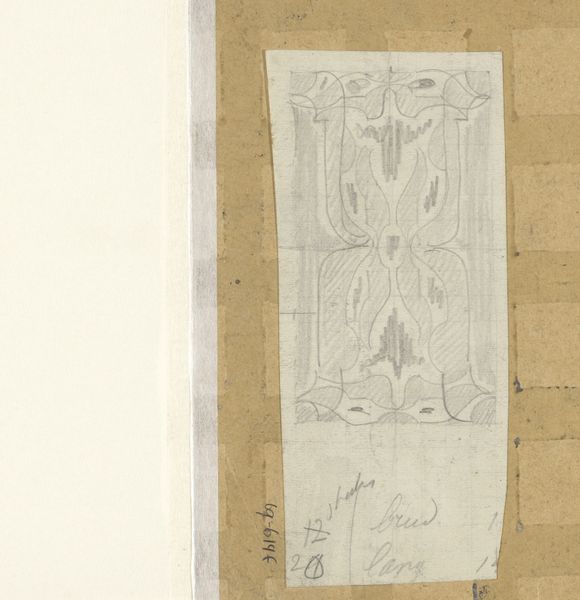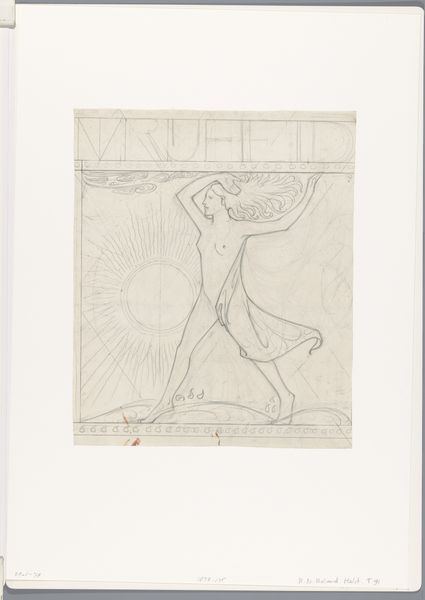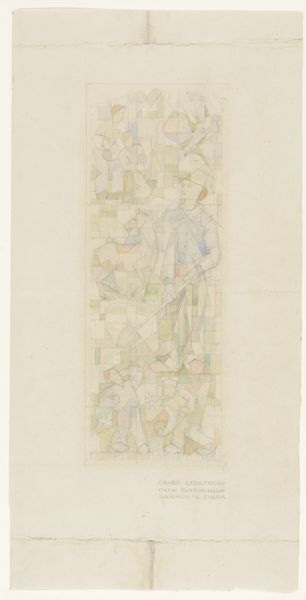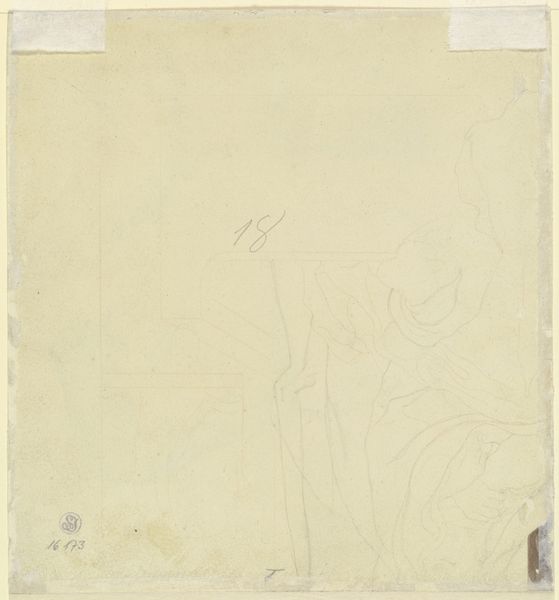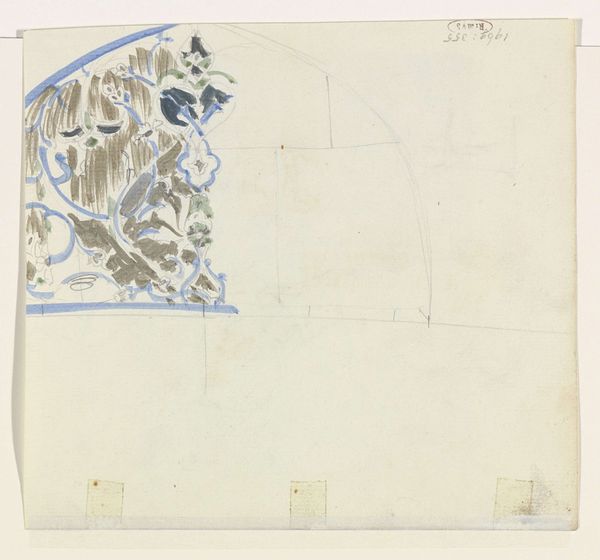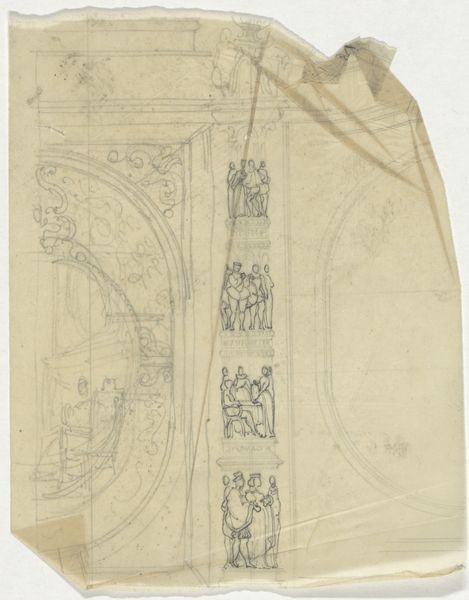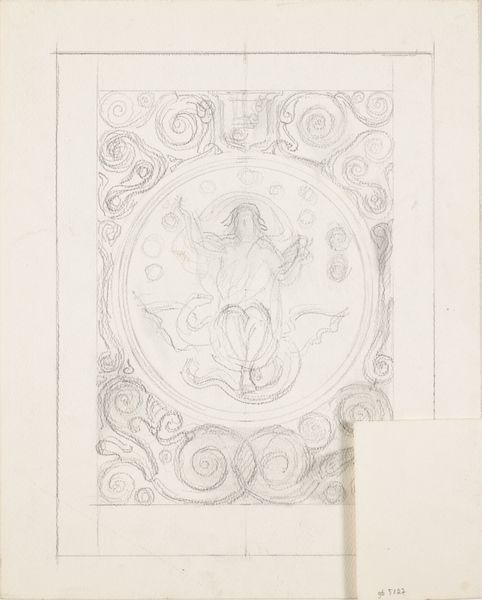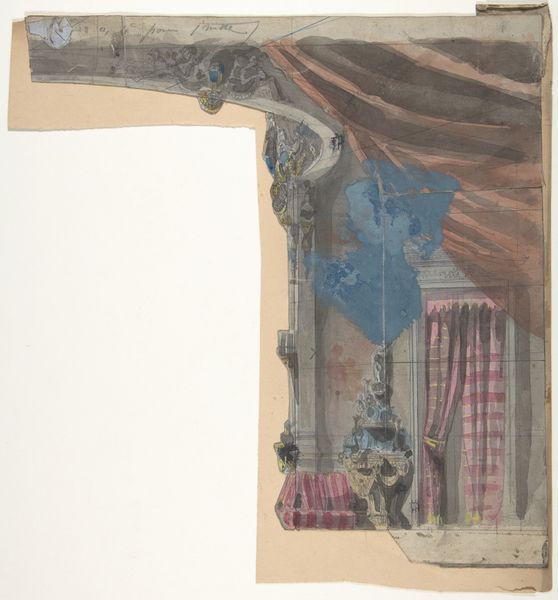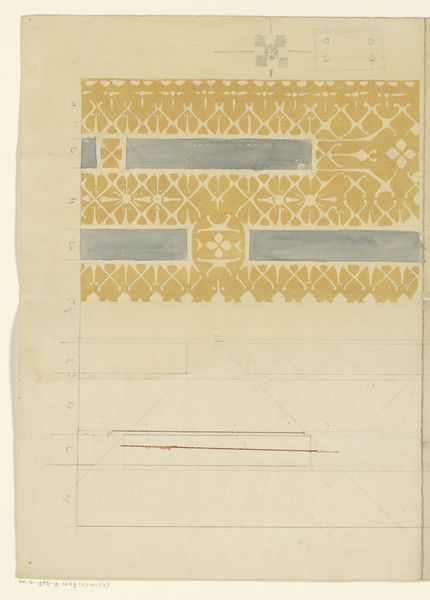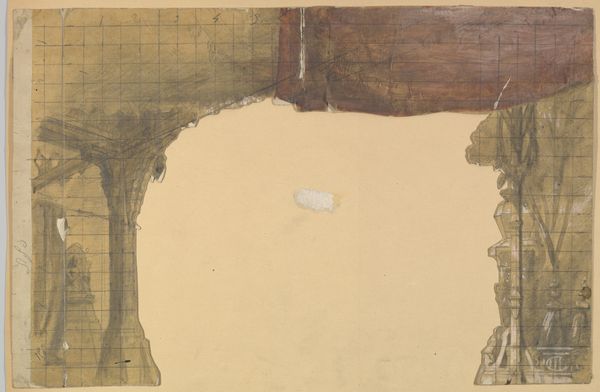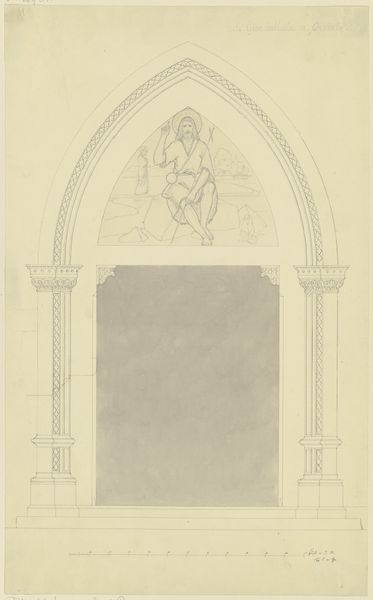
Omslagontwerp voor: Maandblad der Vereeniging voor verbetering van vrouwenkleeding, 1901 1901
0:00
0:00
paper, watercolor
#
art-nouveau
#
figuration
#
paper
#
watercolor
#
watercolor
Dimensions: height 321 mm, width 275 mm
Copyright: Rijks Museum: Open Domain
Editor: This watercolor on paper from 1901 is titled "Omslagontwerp voor: Maandblad der Vereeniging voor verbetering van vrouwenkleeding," or "Cover design for: Monthly magazine of the Association for the Improvement of Women's Clothing," by Reinier Willem Petrus de Vries. The palette is very muted and soft, and it seems to depict two female figures. What's your take on it? Curator: Considering the stated aim of the magazine, let's consider this image not solely for its aesthetic qualities but for the social function and material conditions it implies. What materials are being advertised or promoted here, what social practices are facilitated by their distribution, and to what degree is women's labour made visible through the materials they make and/or wear? The watercolor as medium here may speak to gentility, but the stated theme, even from the title, pushes back on it. Editor: That’s interesting! It didn't occur to me to think of the watercolor as a deliberate artistic choice commenting on "gentility." How does the presence of visible gridlines fit in? Does it further divorce art from craft? Curator: Not necessarily divorce, but instead challenge. By exposing the grid, it exposes the means of production, the mechanics behind even seemingly ethereal design. This denies any artifice around a traditionally 'feminine' product. How do you see it contributing to, or perhaps disrupting, notions of gendered labor in craft? Editor: So, the artist reveals the underlying process to critique established ideals of femininity. Do you think this was a common thread in art nouveau? Curator: While art nouveau often embraced ornamentation and stylized forms, the level of exposed construction is distinct here, pushing material visibility further. By keeping the process naked, de Vries allows for closer critical reflection upon social meanings invested in feminine apparel and feminine art. Editor: That is true! Now I have a better perspective of the work through the lens of materials and labor. Curator: Likewise! This perspective helped illuminate aspects I had not considered before.
Comments
No comments
Be the first to comment and join the conversation on the ultimate creative platform.

